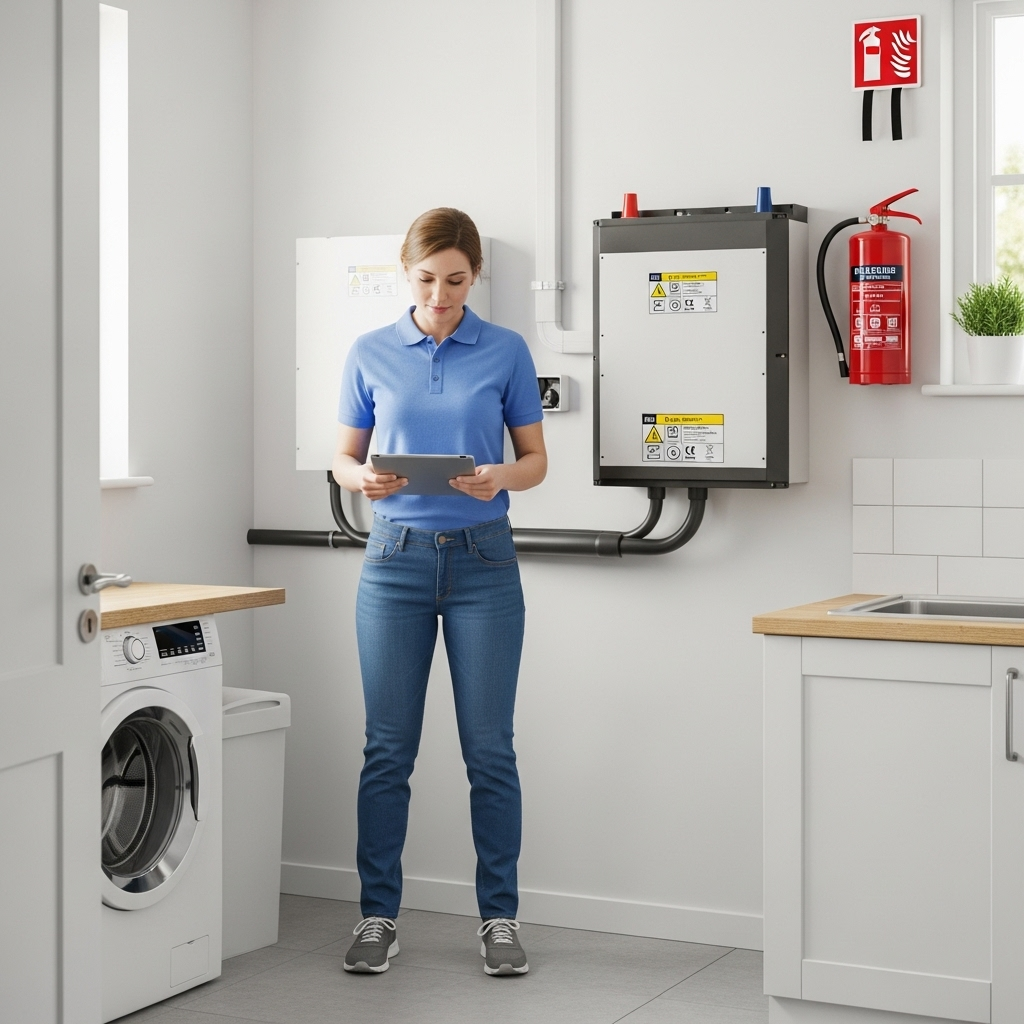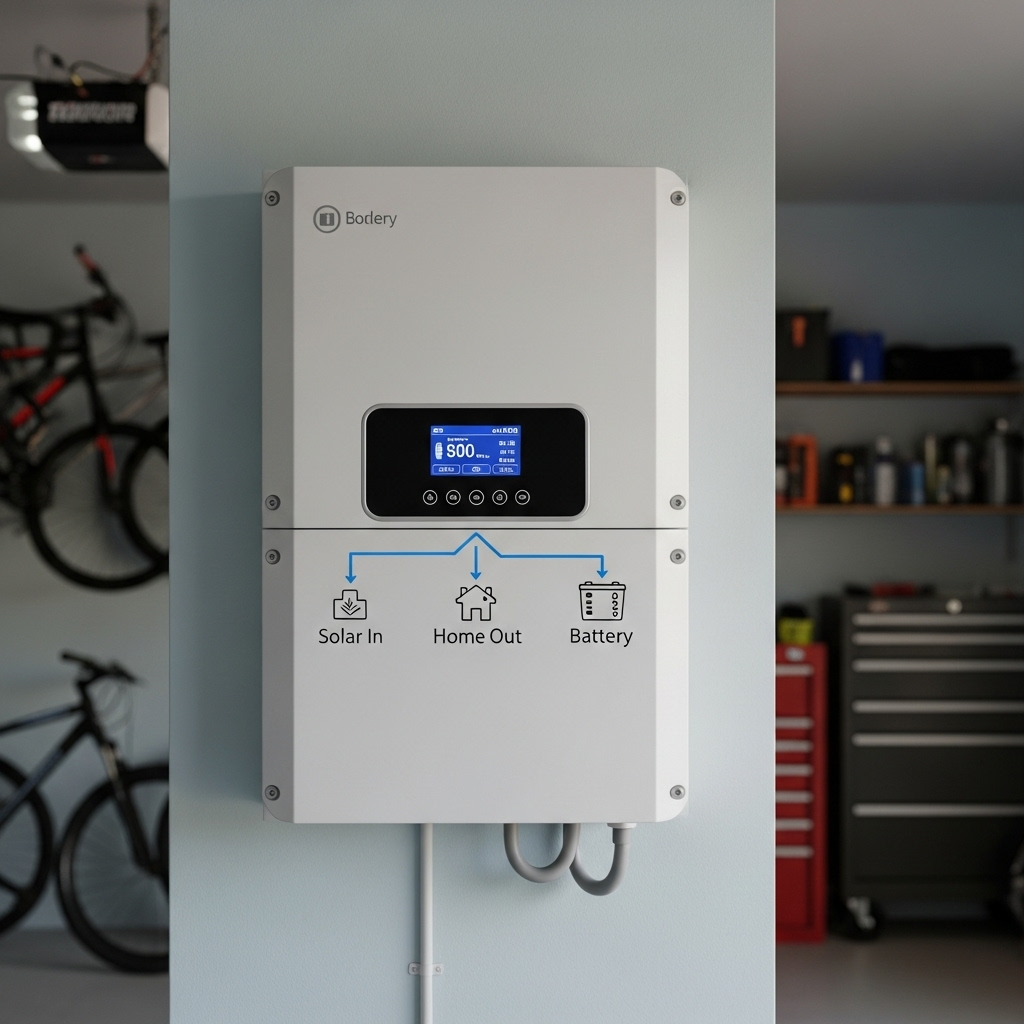Your home energy storage system (ESS) is the core of your energy independence. To get the most out of this powerful technology, a proactive approach to its upkeep is crucial. Proper maintenance is not just about preventing failures; it's a direct strategy for maximizing efficiency, extending lifespan, and securing real savings on your energy bills. This checklist moves beyond the basics, focusing on specific tasks that translate into measurable kWh and financial gains.
The Foundation: Regular Visual and Physical Checks
Consistent physical inspections form the bedrock of a healthy ESS. These simple, regular checks can preemptively identify issues that might otherwise lead to performance degradation and costly repairs.
Environmental Controls: The Unseen Efficiency Driver
Lithium-ion batteries, the heart of most modern home energy storage systems, are sensitive to their environment. Extreme temperatures, both hot and cold, can reduce their efficiency and accelerate degradation. Ensure the area around your unit is well-ventilated and free from obstructions. Check that cooling fans or vents are clear of dust and debris. A system struggling to maintain its optimal temperature will consume more energy just for self-regulation, silently chipping away at your savings.
Connection Integrity: Preventing Small Issues from Becoming Big Problems
Loose or corroded connections are a primary source of energy loss. During a scheduled inspection (with the system safely powered down according to manufacturer instructions), visually check all accessible electrical terminals. Look for signs of corrosion, which often appears as a white or greenish powder. Ensure all connections are snug. A loose connection creates electrical resistance, generating heat and wasting energy that should be powering your home.
Software and System Monitoring: Your Digital Toolkit for Peak Performance
Modern ESS solutions come equipped with sophisticated monitoring software. This digital interface is your most powerful tool for tracking system health and efficiency in real-time.
Decoding System Alerts and Performance Data
Make it a habit to review your system's performance dashboard weekly. Pay attention to key metrics like daily charge/discharge cycles, energy throughput, and any fault or warning logs. An unexpected drop in performance or a recurring alert can be an early indicator of an underlying issue. Tracking these trends helps you understand your energy usage patterns and verify the system is operating as expected.
The Role of Firmware Updates in Efficiency
Manufacturers regularly release firmware updates for their energy storage systems. These updates are not just for new features; they often contain critical improvements to charging algorithms, battery management logic, and overall operational efficiency. Enabling automatic updates or regularly checking for new versions ensures your system is running on the most optimized software, directly impacting its performance and energy-saving capabilities.
Battery-Specific Maintenance for Longevity and Savings
The battery is the most valuable component of your ESS. Specific maintenance practices focused on battery health can dramatically extend its useful life and preserve its capacity.
Understanding State of Charge and Depth of Discharge
State of Charge (SoC) refers to how full the battery is, while Depth of Discharge (DoD) is how much capacity is used. While LiFePO4 (Lithium Iron Phosphate) batteries are robust, consistently cycling them between very low and very high SoC can accelerate aging. Many modern systems allow you to set SoC limits, for example, charging to only 90% and discharging no lower than 10%. This simple software setting can add years to your battery’s life, protecting your investment.
Calibration and System Performance
Over time, the system's ability to accurately read the battery's SoC can drift. An occasional full cycle (from your set upper limit to your lower limit) can help recalibrate the battery management system (BMS). An accurate BMS is vital for efficient operation and for protecting the battery cells from stress. This accuracy directly influences key metrics. As detailed in this ultimate reference on solar storage performance, factors like round-trip efficiency are dependent on a well-managed and calibrated system.
Cleaning and Terminal Care
Dust and grime can act as an insulator, trapping heat and forcing the system's cooling components to work harder. Periodically wipe down the exterior of the unit with a dry, soft cloth. For terminal cleaning (if applicable and accessible, following all safety protocols), use a specialized terminal cleaner to remove any corrosion. This ensures the lowest possible resistance and the highest possible efficiency.
Quantifying the Gains: How Maintenance Translates to Savings
Proactive upkeep delivers a clear return on investment by mitigating performance degradation. The cost of neglect is not just a potential future repair bill; it's a slow, continuous drain of energy and money.
The Cost of Neglect: Performance Degradation by the Numbers
A typical LiFePO4 battery might lose a fraction of a percent of its capacity each year under ideal conditions. However, factors like high operating temperatures and inefficient charging due to poor maintenance can easily double this rate. A study by the International Energy Agency (IEA) highlights that system design and proper maintenance are critical for the long-term viability of battery storage. According to the Medium-Term Renewable Energy Market Report 2016, establishing clear ownership and maintenance models is a key factor for success. Neglecting these aspects can lead to a significant loss of usable capacity over the system's life.
A Proactive Maintenance ROI Calculation
Consider a 10 kWh home energy storage system. An additional 1% efficiency loss due to neglect might seem small, but it adds up. Assuming one full cycle per day, that's 0.1 kWh of lost energy daily, or 36.5 kWh per year. At an average electricity rate of $0.25/kWh, that's an annual loss that could be prevented. The value of proper upkeep becomes even more apparent when considering the high prices of battery systems, as noted in IEA analysis. A proactive approach ensures you get the full value from your investment.
| Maintenance Level | Annual Efficiency Loss (Est.) | Annual kWh Loss (10 kWh System) | Annual Financial Loss (@ $0.25/kWh) |
|---|---|---|---|
| Proactive Upkeep | ~0.8% | 29.2 kWh | $7.30 |
| Neglected System | ~2.0% | 73.0 kWh | $18.25 |
Your Role in a Resilient Energy Future
Maintaining your home energy storage system is more than a series of tasks; it's an active role in managing your personal energy infrastructure. By following these data-backed practices, you ensure your system operates at peak performance, delivering the kWh savings and financial returns you expect. A well-maintained ESS is a reliable cornerstone of energy independence, providing security and value for years to come.
Disclaimer: Always consult your system's user manual and follow the manufacturer's specific maintenance guidelines. Electrical work should only be performed by qualified professionals.
Frequently Asked Questions
How often should I perform a detailed inspection of my home ESS?
A thorough visual inspection should be done quarterly. This includes checking for debris, ensuring clear ventilation, and looking at the system's status lights. A more detailed check of connections (if safe and accessible) and a review of performance logs are recommended semi-annually.
Can I perform all ESS maintenance myself?
Many routine tasks, such as visual inspections, cleaning the unit's exterior, and monitoring software, can be done by the homeowner. However, any tasks involving opening panels or directly handling electrical connections should be left to a certified technician. The International Renewable Energy Agency (IRENA) emphasizes the importance of capacity building and training for local staff and vendors for system management and basic maintenance, as seen in their work on enhancing healthcare delivery with renewables.
What is the biggest mistake homeowners make with their energy storage system?
The most common mistake is a 'set it and forget it' mentality. Ignoring system alerts, skipping firmware updates, and allowing dust and debris to accumulate around the unit are the primary causes of preventable performance loss and premature aging of the system. Regular engagement is key to long-term success.





Leave a comment
All comments are moderated before being published.
This site is protected by hCaptcha and the hCaptcha Privacy Policy and Terms of Service apply.